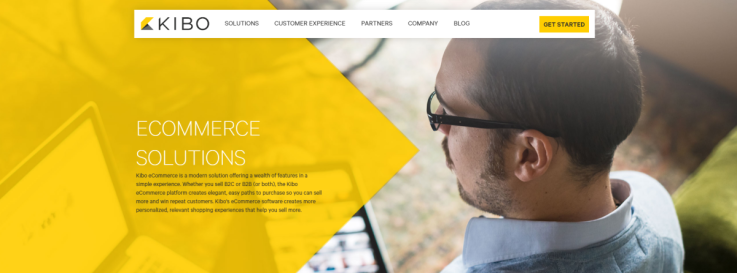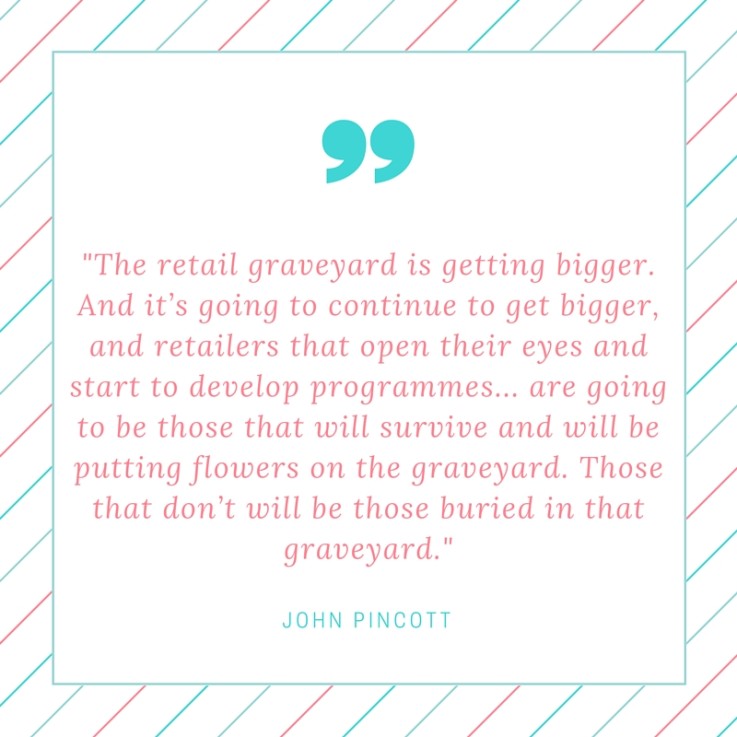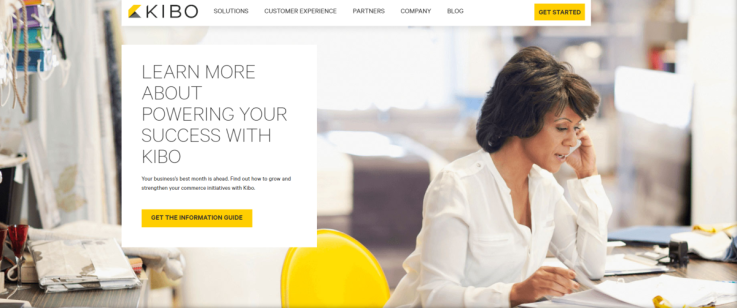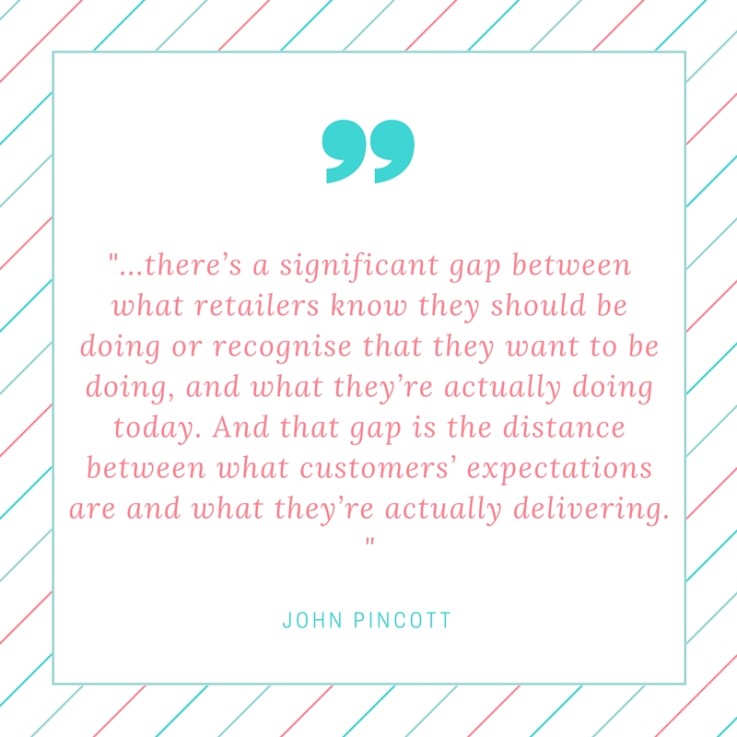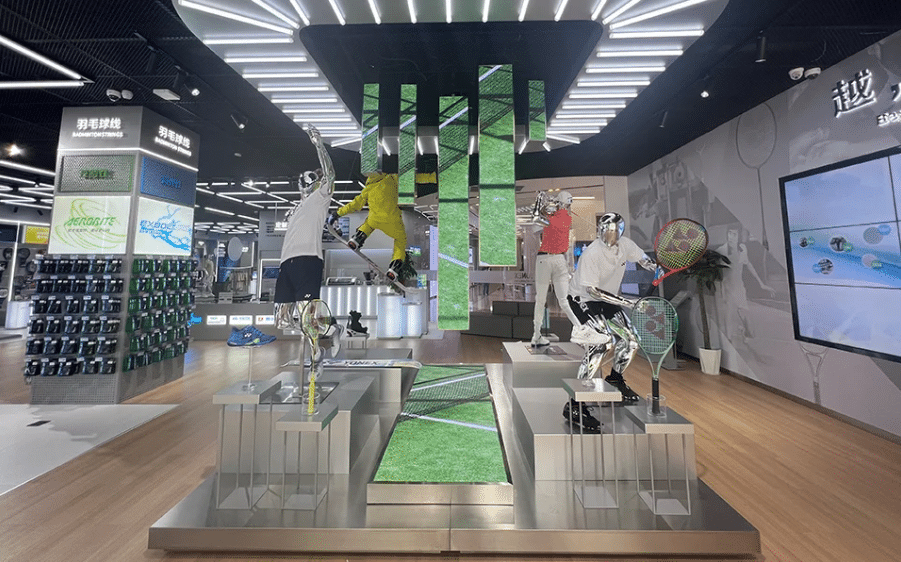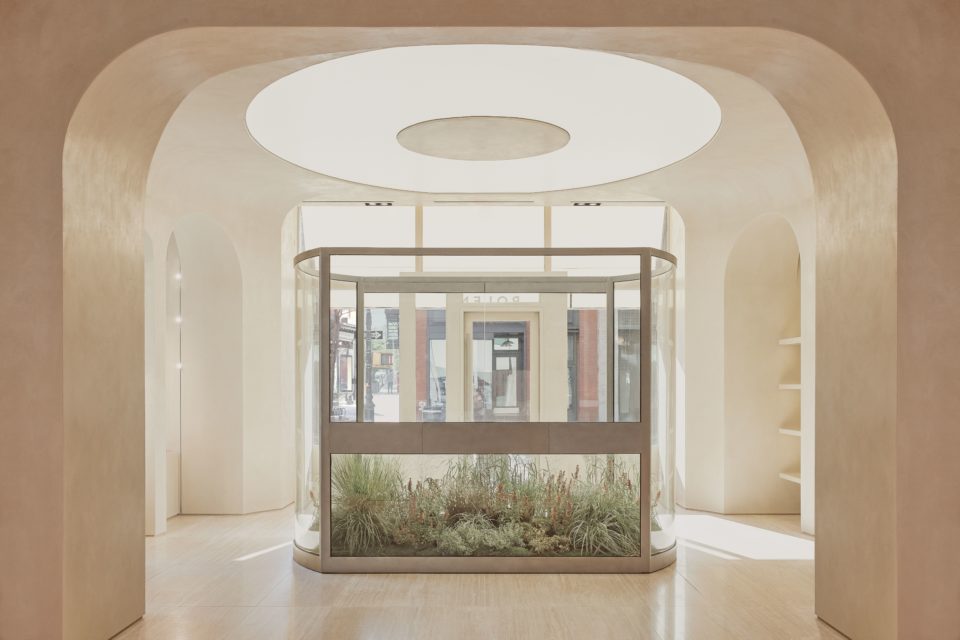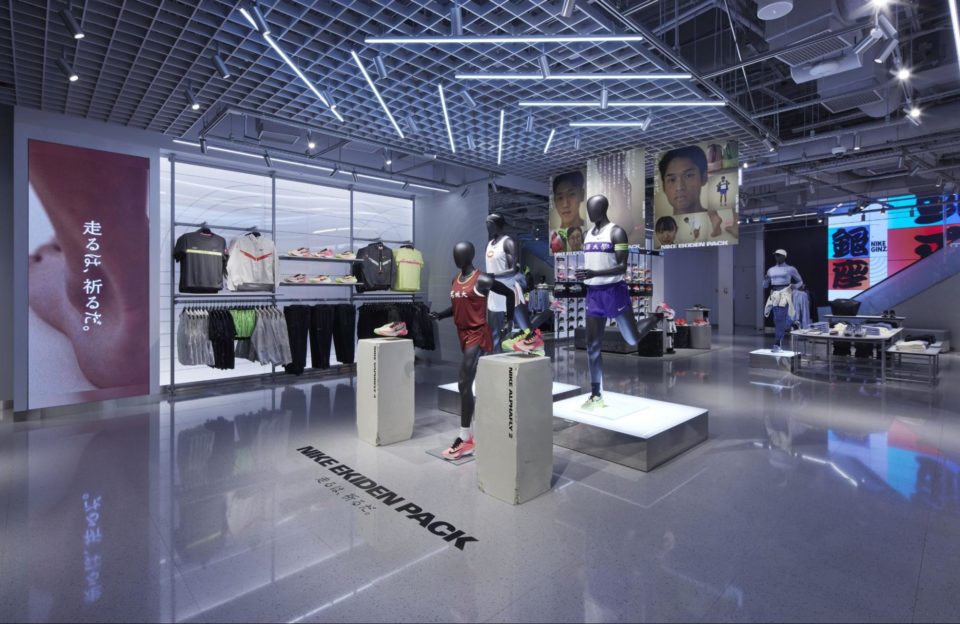Escaping retail’s graveyard: Kibo’s John Pincott on helping retailers enter the modern age

Any product, anytime, anywhere, in the way the customer wants it is the holy grail of omnichannel. Commerce platform Kibo is one company enabling this type of cross-channel integration, and helping retailers and brands achieve greater sales and efficiency. John Pincott, Managing Director EMEA, talks us through true omnichannel strategies, the gap between retailers and customers, and who will be buried in the retail graveyard and who will be laying the flowers.
Could you tell me what Kibo does in a way that my grandmother would understand?
We are a cloud based SaaS software company. We provide services predominately to retailers, but also branded manufacturers to enable omnichannel services. We bridge their online and their offline business, so bringing their ecommerce engagement integrated into their offline operations. Really the cornerstone of what people talk about when they mention the word omnichannel.
Omnichannel is a term that we sometimes shy away from because it’s a bit ambiguous, it can be interpreted in a number of different ways. The way I like to think about is this; at the starting point we all think about the customer, the consumer. And omnichannel is all about serving the customer/consumers’ needs in the way that they want. Any product, anywhere, anyhow, anytime that they would like it. That really is the principal what sits behind Kibo. It’s to help retailers and branded manufacturers realise that consumer vision but to do so with a high degree of efficiency.
So we have three service platforms or products that help deliver that for a retailer. Our mission is to help retailers provide the services that their customers expect, and to do so through a highly efficient integrated order processing network. In a broader sense we’re trying to help retailers come from the dark ages of retailing to the modern age of highly integrated, sophisticated enterprise level retail management.
At the front end of it we actually do high-end ecommerce website development delivered on a cloud base. Number two, really sits at the heart of our business which is an Order Management System (OMS). It is the engine that drives both the consumer services and efficiency. The OMS enables services like ‘Click & Collect’, ‘Ship from Store’, ‘Inventory Lookup’ – the ability for a consumer to be able to go into a website and not only see that the product is available for ‘Ship to Home’ but they can go in and say, “Oh it’s in the Oxford Street branch and it’s in my size and colour.” So they could see stock availability in real time.
That’s rapidly becoming – these are the table stakes of what the customer in the marketplace is expecting from their retailer, or the brand that they know and love. Also within the OMS, it is integrating and optimising the use of inventory – a real true, single point of inventory. So that inventory can be used in a far more effective way than in the past. For example when I order a product online, it may not be sitting in the warehouse for delivery, but it’s sitting in a store up elsewhere and that product is suddenly available to me or it’s available for the retailer to be able to send to me. And it’s available to send to me either for in-store pick up at that store or sent to another store for in-store pick up, sent to my home, my office or the convenience store at the end of my street. Bringing that inventory together enables the ability to be able to channel that product in the most effective way, or the most efficient and cost effective way for the customer.
And then the third platform that we have within our product is a store enablement platform which is a Mobile POS. It’s trying to serve the needs of your customer in the store. So again this comes back a little bit to the OMS but you also have a single point of your customers account. So I might have bought online but I want to be able to return in-store. And when I go into store I want that order that I placed online to be visible for the store associate to be able to process that return. I also want to be able to go into store and go, “You know I bought a product about six months ago, a red handbag, and I’m looking for a belt that goes with it.” And to be able to have the store associate through a tablet interface to be able to work with me as a customer to be able to facilitate that, and go, “Oh yes we’ve got one in stock here.” Or “We don’t have one in stock but here is the belt that I think would go really well with that handbag. And I can have that delivered to your home tomorrow. I can have it back in the store tomorrow” or “It’s around the corner in Oxford Street, you can go and pick up now.” And so that’s what a Mobile POS is. It’s all about the mobility of engaging with a customer on a one to one basis in-store, but giving them access to both their account and the inventory information. And that ties back into the OMS.
So this is why the OMS really sits at the heart of it. Facilitating the information that’s presented to the customer and also facilitating the processing of an order depends on the OMS. Similarly on a store level, to be able to facilitate those types of engagements and functionality – that also depends on a single point of inventory and a single point of the customer’s account.
While those three services are integrated within what we do and they can obviously be enabled as a bundle, clearly a lot of our clients and partners only need one component or two in some cases. So of course we work on a component basis as well, they don’t have to go hand in hand. On the OMS, we integrate and work very closely with all of the market leaders with ecommerce platforms. And similarly on POS we also integrate into existing ePOS systems.
Can OMS do more than they do today?
The OMS really demonstrates the power and really unlocks the value for retailers that in many cases isn’t being realised. It gives you control at a business user level. The tools that we enable are dashboards that allow business users to make changes. To the degree where I can do groupings of products and say, “Well OK all my white goods are going to be fulfilled from this location because they’re big and that’s my distribution channel, whereas other products are open up in stores.” It gives you the flexibility to develop and make changes to that. A very real example of that is one of our clients in the US, there was a flood and a number of their stores were effectively out of commission. So they needed to on the fly be able to turn off the Click & Collect service or even Ship from Store services for those locations. That was done in a matter of minutes to make that change to react to a very real situation, down to more automated system that we have embedded in our program which is down to staffing levels. You had three store associates call in sick today, so the order flow from that store is going to be inhibited. So of course you don’t want be flooding them with orders that are shipping from that store even if it’s a little bit closer to the customer, you want those to be re-channelled elsewhere. And so those are the types of facilities that are baked into an OMS platform.
Do you think this allows for a true omnichannel strategy?
When you look at the retail environment, it’s rapidly changing, there’s a lot of visionaries that say what the future of retail is. What is a store going to look like? And a lot of these visions are not in another decade. They’re rapidly upon us – there’s a lot of shift towards stores being used as effectively customer engagement centres and not necessarily stocking locations and points of distributions. They are there for the experience and a lot of retailers are already moving in this direction. The point really is that this isn’t some futuristic vision, this is upon us.
You look at the growth or the unbelievable adoption of Click & Collect. John Lewis still talk about that 50% of their online orders are actually fulfilled through Click & Collect. Consumers are voting with their actions and their feet and that’s what they want. So retailers who have been complacent and don’t have that facility are soon going to be losing favour with their customers. There’s two things that are going on: one is there’s a significant gap between what retailers know they should be doing or recognise that they want to be doing, and what they’re actually doing today. And that gap is the distance between what customers’ expectations are and what they’re actually delivering. Retailers have to bridge that gap. They can’t sit and have a five year plan to get there because actually they’ll be out of business.
There are many cases of retailers today that are struggling to maintain the loyalty of customers, they’re struggling to maintain their business. And it really comes down in my view to the fact that they do not have a sound e-commerce strategy. That they have a website that works independently of stores, they have no integration between it. They took a very easy first step which was, “Well let’s put up a website and treat it like a separate store.” but they didn’t take the most fundamental one which is actually to think about their business more holistically, and they don’t have a strategy around it. I think there are many cases in this, lots of documentation around those. Those are the retailers that are struggling. Those that are succeeding are those that who have already started that process. Those that still have a chance of survival are the ones who are today actually engaged in projects to develop programmes like this. There’s a pretty major trend.
The second is this perception amongst retail and brand manufacturers’ community, which is that these are major developments projects. That this is going to be like an expedition of Everest. And in actual fact a lot of these services through cloud based platforms such as ours are far more easily achievable. Both in terms of time to market, resource requirements, and then cost. So they’re not really the Everest expeditions as many perceive them to be. Some are locked in because, “we’ve got our legacy systems, how do we manage these?” Equally a lot of the programmes and certainly a lot of the deployments we do are what I would call overlays. So it’s working alongside, it’s not a rip and replace, it is working alongside systems that are there.
Going back to my point of having a sound ecommerce and omnichannel strategy is one that is a start here, move forward, evaluate, grow, change, you’ve got a plan to get there. And in doing you’re engaging with your customers progressively the way they want. There are a lot of retailers that are going to start to struggle. I think that “the retail graveyard is getting bigger. And it’s going to continue to get bigger, and retailers that open their eyes and start to develop programmes, such as those that I’ve described and things that we facilitate, are going to be those that will survive and will be putting flowers on the graveyard. Those that don’t will be those buried in that graveyard.”
I think there’s another significant trend in retail right now that is evolving, and one that we are very involved in, which is the bringing together of brands and retailers. To just pick one – say I’m a devotee of Nike, always wears Nike shoes, wears Nike clothes, so I have a natural affinity with Nike. Naturally when I’m looking for the latest products that Nike has on offer I’m going to go to the Nike website. But I’m still that same consumer who wants the convenience of Click & Collect or is it available in my local mall? I want to be able to go to Nike and be able to see that, but I want then the convenience of having that product at my disposal – back to the ‘any product anywhere’ concept. To facilitate that brands and retailers are going to be starting to work much more closely together. That concept of brands sell to retailers, retailers sell to customers I think is being washed away. Or certainly is coming together because it’s still serving that same customer, but they have to collaborate to serve that customer better.
How you think about what we call ‘attribution of the order’. And what I mean by that is who gets the margin? But fundamentally – there’s a trend towards brands working more closely with retailers. Some brands have their own stores but they’re very few brands that don’t depend on a distribution channel through other retailers that only exclusively sell through their own stores or online. In most cases they really need to be working very closely together. There’s the benefit for the retailer because of course they’re getting exposure for the Nike stock that they’ve got on their shelves and they’re physically invested into. There’s clearly benefit to the consumer because I get the service that I want. And of course Nike benefits from the exposure of all of their inventory, all those Nike shoes that are out there on the planet are suddenly lit up and accessible to that customer who is buying online.
So we see a trend towards that collaboration and partnership between brands and retailers. And that’s something that goes to the history of our business. We started life working with brand manufacturers and helping them develop a Direct to Consumer business, while using their dealer network or retailer network to distribute those products.
Our mind set is very much centred on the customer. If I had to peg one concept that we use in a lot of our thinking, it’s about saving the consumer time. Time is the most precious commodity that any of us have. There are only so many hours in the day and we want to help people save that time to spend in the way they want, and inefficient retail is not a good use of people’s time. Now people might chose that, going back to an experience store and sitting in that chair, trying on that dress or feeling the texture of that handbag is both a pleasure, but also an element of my shopping experience that I want. Then yes absolutely we should be delivering that. But I cannot believe that there’s anybody on the planet that would say, “I get a lot of pleasure out of sitting in queues.” “Or asking questions that don’t get answered. Or waiting five days for delivery or missing that deadline because I needed it now.” There is no one who would say that and so we look to help people save that time.
What’s the key piece of advice you would give to a retailer looking to create an omnichannel strategy? What’s the one thing that always gets overlooked?
I don’t think the OMS gets overlooked, but I think it gets underestimated on the importance of having a sophisticated enterprise – a high level, configurable, flexible order management platform that drives the process. I think often there’s a lack of appreciation for the importance that that has in terms of delivering the service that you want and the efficiencies that you’re aiming to drive. However, I think the thing that I would really centre on is what we often see is projects that get escalated and enlarged beyond the ability to move forward. So they become massive undertakings. They have a vision for the finish line and they develop a project that doesn’t have sufficient ‘walk before you run’ principle behind it. Our aim is to get to the summit of Everest, and that’s a grand vision, but many start embarking on that expedition rather than, “why don’t we figure out how we’re going to develop the programme progressively, we’re going to get it climatised, we’re going to test and pivot, we’re going to run a pilot. A pilot programme can be centred around a series of stores geographically. It could be regional, it could be certain functions, let’s start with exposing our inventory. That’s our first challenge. Then let’s enable in-store pick up. Then let’s enable Ship from Store, so that I’m starting to use my store inventory more effectively.” So I guess that would be my one piece of input which is view this as a progressive process to an omnichannel vision. Not, “Oh we’re doing omnichannel so we got to do it all today.”
Do you think people worry they might be behind with omnichannel, so feel they need to rush ahead with it and they don’t have the time to progressively implement it?
Yes I think that often these initiatives come from above – board level discussions that lead into, “we’re behind the curb. We need to move rapidly forward.” And the organisation either isn’t ready for it or there’s obstacles within it. Those tend to be around a lack of coordination across the organisation. But this needs to be cross-organisational initiative. It cannot be siloed by, “Oh the ecommerce director is the one who’s steering that one.” Or “Store operations is leading that one.” Or “IT is trying to put this programme in.” It really needs to be a collaborative effort across the organisation, albeit some of those elements might not come into be for two years when you put the plan together, but at least your store operations person who has to set up this has some input or some awareness that of the development. So I think that’s pretty crucial.
Which projects that you’ve worked on do you think are the most innovative?
We worked with Suzuki in the UK on a unique programme, especially in the motorsports sector. We worked across their cars, motorcycles, marine brands and divisions. What we enabled with Suzuki was the ability for customers to buy fitted parts through Suzuki, and then within their order to be able to schedule the actual local dealer installation. So I could buy an accessory or I could buy a replacement part for my Suzuki motorcycle or my car and do so online directly with Suzuki and schedule it. While that might sound like a simple thing, from a technical perspective that’s integrating through with a dealer, both to check inventory to see whether they have actually got the part that you’re selling and you’re doing that instantly, and if they don’t that is teeing up the ability to have that product delivered to that dealer for that specific installation. So it’s dealing with that configuration but doing so in real time. So recognising it’s in stock, “great I’ve got it so I could actually schedule that for this afternoon if there was a slot available.” If it is not in stock, “OK well I can’t do this afternoon slot so it goes into tomorrow.” That is an example of one that is unique and simple on the surface, but actually reasonably complex behind the scenes.
The other one is on Mobile POS – we now we facilitate all of the in-store POS for Tesla globally, So over a thousand dealers. Tesla is regarded as one of the most forward thinking automotive companies. In fact, Tesla think of themselves more like a technology company than they do a car company. As a result, right within their earlier strategy was if our product is based on these principles, so must our engagement of our customers. So their stores are highly sophisticated, run by our systems, that allow again customers in-store to be able to browse through the tablet what’s available and that whole scenario that I was describing around – “It’s in the store I want to buy it now, if it’s not I want to have it delivered to where I want” or “I want to pick it up this afternoon because I’m driving out of town.”
The whole concept behind that by the way is ‘Save the Sale’. You have a customer who is engaged, loyal but you don’t have what they want. You’re about to lose them as a customer. You’re certainly about to lose that sale. And the more sales you lose then you ultimately lose that customer all together. So you’re about to lose that sale and your store associate is able to go with a clever, slick mobile tablet to say, “Oh no! The product that you want is available up the road and I can get it to you this afternoon.” You can save that sale. So the whole concept behind it, is to not only serve customers, but to capture sales the moment that you have the opportunity to do so. Whereas in the past you would lose them.
Another is with a Canadian/American retailer called Roots. They’re a very cool brand, been around for a long time. We developed a whole omnichannel programme for Roots and they had a set of expectations of what kind of uplift. Because ultimately you’re actually trying to drive more sales, make more money as a business. So the metrics are important and we view it as uplift. You implement this and what kind of step change did you see in the volume of business that you are doing. So with Roots we implemented the Ship from Store. And within four months, there was a 46% lift in online sales. That was by making stock available, that’s all it was doing. It was taking all this stock they had across their stores – previously when I went and bought online and I was looking for a red medium if it wasn’t in the warehouse, it was not available to me. But there were 25 of them sitting in stores, so by unlocking that inventory they captured a massive increase in orders immediately.
There was also another phenomenon that came from it which was customers are put off – you might have the medium in red in stock but you don’t have the small and you don’t have the large. And the customer sees that and says, “You know what, that means if I get the medium and it doesn’t fit, I don’t have an option to get the small or the large. So I’m not going to order.” We did some research and found that actually there is this, for colour ways and size variants, it was affected by out of stock in associated products that they were interested in.
How does this fit in with abandoned carts online?
A lot of marketers go, “well you know 50% – 60% abandoned carts, that’s kind of normal. And it’s just down to people using the cart as a place to hold products they’re sort of interested in. It’s sort of like a Save for Later”. Personally I don’t believe that, I think that there are people that come in with intent. They have a need and their need is not being served for one reason and the other. They got to that point and they don’t ask enough questions. There is something that is putting them off and it could be the delivery, the lack of ability to see whether it’s in stock, the lack of ability to have it in my hands the way I want it. The P&P charge that I didn’t expect that you just put in front of me, the process of ordering that’s taking way too long. “Oh you don’t take PayPal.” “I have to register again.” All those things they’re just niggles and hurdles that you’re putting in front of the customer, I don’t think there’s enough known – retailers don’t know enough about their abandoned cart and there’s a whole opportunity there.
You recently launched a new cost based order routing service – what are the principles behind that?
It’s a variable within the order routing decision tree. Previously it was “customer wants product A I’m going to ship it from the Oxford Street store because they live in London.” What cost based order routing does is it allows the system to say, “OK well what is the most cost effective way to get that product to the customer?” and it might not be the fact that I live in London and Oxford Street is closest to me. That might not be the cheapest way to get it to me. There may be factors that you want to put in there like we have a pick up on Mondays from this location and we can get it to you on Tuesday, and it’s more cost effective to do it through another location. That might be one very simple dimension to it in terms of cost evaluation.
Another can get into much more sophisticated which it is looking in inventory terms. So yes Oxford Street has two of that product and it would be deemed to be the most cost effective routing to get it from Oxford Street to me. But there’s 25 sitting on the shelf elsewhere, I know ultimately that there’s going to be an overstock there and you’re going to have to discount that product. So I should be moving product from there because the ultimate cost variant is going to be lower. The simple principal is saying use the holistic view of cost and revenue maximisation for serving that customer and that demand at that moment.
What is the next phase of development for Kibo?
From a technology perspective, we see our mission is to work with and help retailers and branded manufacturers realise their omnichannel ambitions. And in doing so we will continue develop our existing services and we will look to extending and expanding to include others. So there’s other components of the whole retail mix and services offered that’s retailers require that we will be looking to add to our effective service or platform mix. We use technology to enable service and drive efficiency.
Retailers are brilliant merchandisers, great marketers and fabulous at engaging with customers and serving customer’s needs. Our view is that we want to stick to technology and the software that helps that, and we want retailers to be able to be free to do what they do really well and not try to turn themselves into quasi-technology companies.
Find out more about the latest trends in retail by taking part in one of our London retail safaris.

